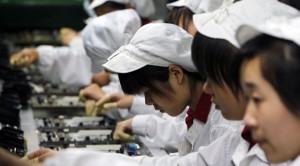BEIJING, China – China’s manufacturing activity contracted for the second straight month in February, the government said Sunday, a day after the central bank announced an interest rate cut to help stem a slump in the world’s second-largest economy.
The official Purchasing Managers’ Index (PMI) released by the National Bureau of Statistics (NBS) came in at 49.9 last month, up a fraction from 49.8 in January, but remaining in contraction.
The index, which tracks activity in factories and workshops, is considered a key indicator of the health of China’s economy, a major driver of global growth. A figure above 50 signals expansion, while anything below indicates shrinkage.
January’s figure had been the first contraction for 27 months and highlighted weakness in the key sector as China’s economic growth slows.
7.4 percent expansion
China’s overall economy expanded 7.4 percent in 2014, a 24-year low, with the slowdown prompting authorities to loosen monetary policy in a bid to put a floor under growth.
Underscoring concern, the People’s Bank of China (PBoC) announced on Saturday that it was lowering benchmark interest rates for the second time in three months.
The central bank lowered its one-year rate for deposits by 25 basis points, or 0.25 percentage point, to 2.5 percent and its one-year lending rate by a similar margin to 5.35 percent.
The move takes effect on Sunday.
In a statement posted on its website, the bank pointed to “historically low inflation” as among the factors behind the move.
Brink of deflation
China’s inflation plunged to a more than five-year low of 0.8 percent in January, fuelling fears the economy could be on the brink of deflation.
The PBoC surprised markets in late November by cutting interest rates for the first time in more than 2 1/2 years.
Sunday’s data from the NBS come after British bank HSBC said last week that its PMI survey returned to expansion territory.
The preliminary reading for February came in at a four-month high of 50.1, up from 49.7 in January, said HSBC, which is scheduled to release its final figure on Monday.
China’s leaders are trying to pull off a managed slowdown in the Asian giant in which consumer spending becomes the main driver of growth as in other major economies such as the United States and Japan.
